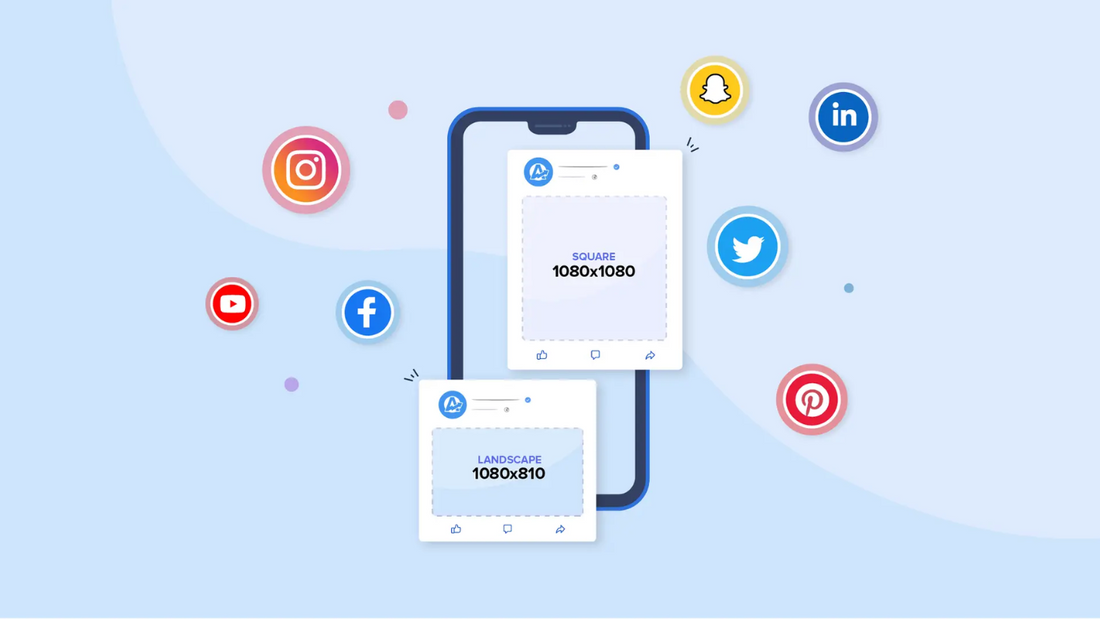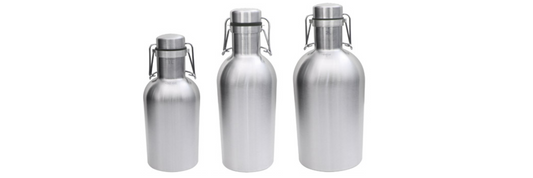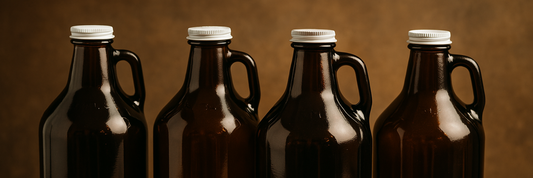Having trouble choosing logo sizes for your Website, Facebook, Instagram, TikTok, or other social media platforms? Don't worry! Let's learn more about logo dimensions through the article below.
- What Are Branding Colors? Guideline to Choosing the Perfect Branding Colors
- What Are Black And White Logos? Successful Brands With Black and White Logos
- Top 7 Logo Trends You Should Watch Out For
What is Logo Size?
Although each logo is unique, the size you save and share it in is not. A great logo design is one that can be resized and quickly produced on hundreds – even thousands – of different contexts. Having logo variations across different materials is essential for your business, as it allows you to easily adapt your logo to every application you need, such as websites, merchandise, packaging, social media, advertising, printing, or other publications
What Logo Size Is Best?
There is no one-size-fits-all. Currently, logos are used for a wide variety of marketing needs, so ideal logo dimensions will vary from platform to platform. Adapting your logo to the platform can make a noticeable difference in brand visibility and recognition. So, let’s explore this further.
Logo Sizes For Websites And Apps
You can read our complete guide to logo sizes for websites and apps.
Standard Favicon Sizes
|
Use |
Size |
|
Browser (small) |
16 x 16 pixels |
|
Browser (big) |
32 x 32 pixels |
|
|
48 x 48 pixels |
Logo Size For Website Header
|
Type |
Size |
|
Full banner |
468 x 60 pixels |
|
Horizontal layout |
250 x 150 pixels |
|
350 x 75 pixels |
|
|
400 x 100 pixels |
|
|
Vertical layout |
160 x 160 pixels |

Logo Sizes For Mobile App Icons
|
Type |
Size |
|
iPhone 6S and up |
180 x 180 pixels |
|
120 x 120 pixels in Spotlight Search |
|
|
87 x 87 pixels in Settings |
|
|
iPad |
152 x 152 pixels |
|
Android |
192 x 192 pixels |
|
Windows |
62 x 62 pixels |
Logo Sizes For Social Media
Choosing the right logo sizes for social media platforms is crucial for maintaining a professional and visually appealing online presence. Here are some recommended logo sizes for popular social media platforms:
Facebook Logo Size
|
Type |
Size |
|
Facebook Profile Picture Size |
180 x 180 pixels |
|
Facebook Cover Photo Size |
820 x 310 or 312 pixels |
|
Photos shared on timeline (with logo) |
1200 x 628 or 630 pixels |

Instagram Logo Size
|
Type |
Size |
|
Instagram Profile Picture Size |
110 x 110 pixels |
|
Thumbnails |
161 x 161 pixels |
|
Square image post |
1080 x 1080 pixels |
|
Landscape image post |
1080 x 566 pixels |
|
Portrait image post |
1080 x 1350 pixels |
|
Stories |
1080 x 1920 pixels |
Logo Size For Tiktok
|
Type |
Size |
|
Profile picture |
Min. 20 x 20 pixels |
X (Twitter)
|
Type |
Size |
|
Profile picture |
400 x 400 pixels |
|
Cover picture |
1500 x 500 pixels |
|
Tweeted images |
Minimum 440 x 220 pixels, Maximum 1024 x 512 pixels |
YouTube
|
Type |
Size |
|
Profile picture |
800 x 800 pixels |
|
Thumbnail picture |
1280 x 720 pixels |
|
YouTube channel cover picture |
2560 x 1440 pixels |

LinkedIn Logo Size
|
Type |
Size |
|
Profile picture for business/career page |
400 x 400 pixels |
|
Cover photo |
1128 x 191 pixels |
|
Background image (with logo) / Linkedin Banner Size |
1584 x 396 pixels |
|
Main image (with logo) |
1128 x 376 pixels |
Logo Size For Pinterest
|
Type |
Size |
|
Profile picture |
165 x 165 pixels |
|
Board |
222 x 150 pixels |
Logo Sizes For Email Signatures
|
Use |
Size |
|
Images and banners |
300 to max. 500 pixels x 70 to max. 190 pixels |
Logo Sizes On Google Business Profiles
|
Type |
Size |
|
Profile picture |
720 x 720 pixels (Resolution min. 250 x 250 pixels) |
Logo Sizes For Print
Logos can be printed on all types of objects and surfaces for increased exposure such as t-shirts, coffee mugs, bags, and business cards,...
Here are some examples of logo sizes for print:
|
Object |
Size |
|
Business cards |
85 x 55 mm (Total size, standard) |
|
Mugs (11 oz) |
230 x 90 mm |
|
Logo size for hats |
Approx. 3-3.5 inches wide |
|
Logo size for shirts |
max. 12 x 14 inches or 14 x 15 inches (print area) 5 x 2.5 inches or 4 x 5.5 inches (breast pocket) |
|
Letterhead |
8.5 x 11 inches (US letter) |
|
Envelope |
9.5 x 4.125 inches (Standard commercial) |
|
Tote bags |
15 x 16 inches |
Logo Sizes For Branded Merchandise
Here are some of the standard print sizes:
|
Type |
Size |
|
Business cards (US Standard) |
3.5 in x 2 in |
|
Mugs (Standard 11 oz mug) |
7.5 in x 3 in |
|
Hats |
around 3-3.5 in |
|
T-shirts |
maximum size for the print area is 14 in x 15 in |
|
Tote bags |
14 in x 16 in |
|
Letterheads |
210 mm x 297 mm |
|
Standard letter size (US) |
8.5 in x 11 in |
What Are The Basics Of Logo Sizing?
To get the best logo size, you need to consider the following parameters:
- Dimensions:
- For digital media, logo dimensions will be in pixels.
- For print media, logo dimensions will be in millimeters or inches.
- Resolution: Logo resolution or image quality is indicated in PPI (pixels per inch).
- File size: The logo's dimensions and resolution will determine how big the file contains it. The bigger and higher resolution the image is, the bigger the file.
FAQs
Should my logo be PNG or JPG?
PNG files have the best quality-to-file size ratio and are transparent, so that's what your logo should be. For photos and images with a lot of color, JPG works better.
|
Type |
Best file type |
|
|
PNG |
|
|
JPEG |
|
|
JPEG, PNG, GIF |
|
Tiktok |
JPG or PNG |
|
|
JPG or PNG |
|
Google business profiles |
JPG or PNG |
What is the logo size aspect ratio?
The ratio of the logo's width to height is known as the logo size aspect ratio. A logo that is square and has a good aspect ratio of 1:1 is ideal. Other aspect ratios like 3:2 or 4:3, might be suitable as well.
What is the best size and DPI for a logo?
The higher the dpi, the greater the resolution and the better the image quality. A resolution of 300 dpi is the recommended starting for setting up artwork for printing. Images or logos that are saved from websites are typically 72 dpi. This reduces the size of the file to enable faster web page loading.
How do I change the size of my logo?
You can use Photoshop, LogoMaker, or Canva to edit the size of your logo.
Conclusion
In conclusion, finding the right logo size for your brand is crucial for creating a strong visual identity and building brand recognition. By understanding the impact of different logo sizes and following best practices for design, you can effectively communicate your brand message to your target audience.
Related articles:
>> What Are Branding Colors? Guideline to Choosing the Perfect Branding Colors>> What Are Black And White Logos? Successful Brands With Black and White Logos









